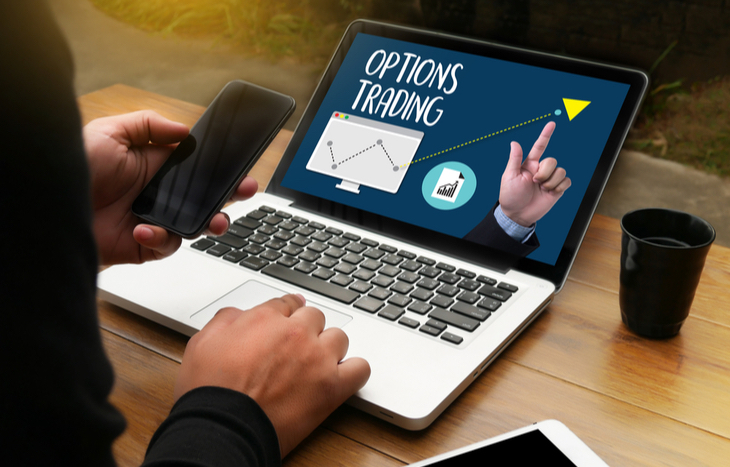What is an Exercise Price?
When derivative traders engage in speculation, they buy options contracts with specific prices attached to them. These contracts outline the right to buy underlying securities at a given price, within a given time frame. They’re chiefly dependent on the exercise price. It’s the fixed price at which the investor can exercise the option. More commonly, it’s known as the strike price.
Because they’re speculative investments, options contracts represent an investor’s thesis. The strike price at which they purchase the investment represents their speculative threshold. If it’s a call option, they believe the price will go higher. If it’s a put option, they believe the price will fall lower. Therefore, it determines the validity of the contract when the time comes to execute, or let it expire.
Here’s a closer look at the exercise price, including how it works and what its impact is on options contracts during the exercise period.

Purchasing Options Contracts Based on Exercise Price
Options contracts are available at different strike prices and with different expiratory periods. These variables have an impact on how much it costs to purchase the contract. It also impacts whether it’s a put or a call contract.
When buying an options contract, the further away the exercise price is from the current price, the less expensive it becomes to secure the contract. This is representative of its extrinsic value. That is to say, the more movement a stock needs to experience to reach the exercise price, the less likely it is to actually reach that price. Conversely, the closer it is to the exercise price, the more likely it is to reach and exceed it; thus, the more valuable it is.
Options traders need to strike a balance between an attainable exercise price and an expiratory date in the future. An exercise price that’s too high or an expiratory date that’s too soon could leave the contract worthless.
In the Money vs. Out of the Money
A contract’s exercise price vs. its current market price determines whether it’s In the Money (ITM) or Out of the Money (OTM). These terms represent the current value of the contract: whether it’s exercisable for a profit or whether it’ll expire worthless.
- ITM contracts are profitable, meaning the exercise price of a call option is higher than the current stock price. Conversely, it means the exercise price is lower than the current stock price for a put option.
- OTM contacts are worthless because the current market price is below a call option or above a put option. Exercising would mean choosing to pay more than market rate for the underlying security.
Options contracts can straddle the line between ITM and OTM, depending on the exercise price. Traders need to mind the expiration date of the contract and the current share price as they determine whether to exercise the option or let it expire.
To hedge against volatility, many investors will buy both call and put options. This is a strategic investment tactic that involves monitoring both exercise prices and making the decision to exercise based on a stock’s behavior or patterns. It means letting one contract expire worthless—which one depends on clear price movement in one direction or investor sentiment at the time the contract(s) expire.
Determining the Profitability of an Unexercised Option
Holders of options contracts need to pay close attention to the current price of a security relative to the exercise price and expiration date of its contracts. Together, these three variables determine the profitability of an unexercised option.
The exercise price vs. current market price tells investors whether their contract is currently in or out of the money. If it’s in the money, the difference between the two prices is equivalent to the profitability of the option. However, market price is always in flux, which makes time-to-expiration a consideration.
Jeremy holds a call option for ABC Company with a strike price of $100. Right now, his contract is in the money because the share price of ABC Company is $105. The share price of the company has been rising steadily for the past two weeks, and there are two more weeks left on Jeremy’s contract. He can exercise now and profit $5/share (less the cost of the contract) or continue to hold his contract in favor of further price appreciation. If, in two weeks, ABC Company stock reaches $110, his profit rises to $10/share; however, if it falls, he’ll lose money. If it falls out of the money, his contract will become worthless.
Because it’s a fixed figure, the exercise price of an options contract plays an important role in when investors choose to exercise. Its relativity to market price constantly changes. This means the profitability of an unexercised option also changes.
Exercise Price: The Most Important Factor in Option Value
The exercise price is far and away the most important factor in determining the value of an option contract. As investors speculate about price, they’ll choose strike prices that reflect their thesis. They’ll choose contract expiration periods that tend to reflect the riskiness of their position. Throughout the duration of a contract, the exercise price remains static, which makes it the benchmark for profitability and the clearest determinate of the contract’s value.
To learn more about the importance of a strike price and it’s impact on options, sign up for the Trade of the Day e-letter below! Trading experts Bryan Bottarelli and Karim Rahemtulla share their market insights, trading tips and more.
Whether you’re just getting into options trading or are using derivatives to offset risk, exercise price is the first and most important concept to learn. Choosing the right strike price when buying a contract has everything to do with how lucrative it could be.





